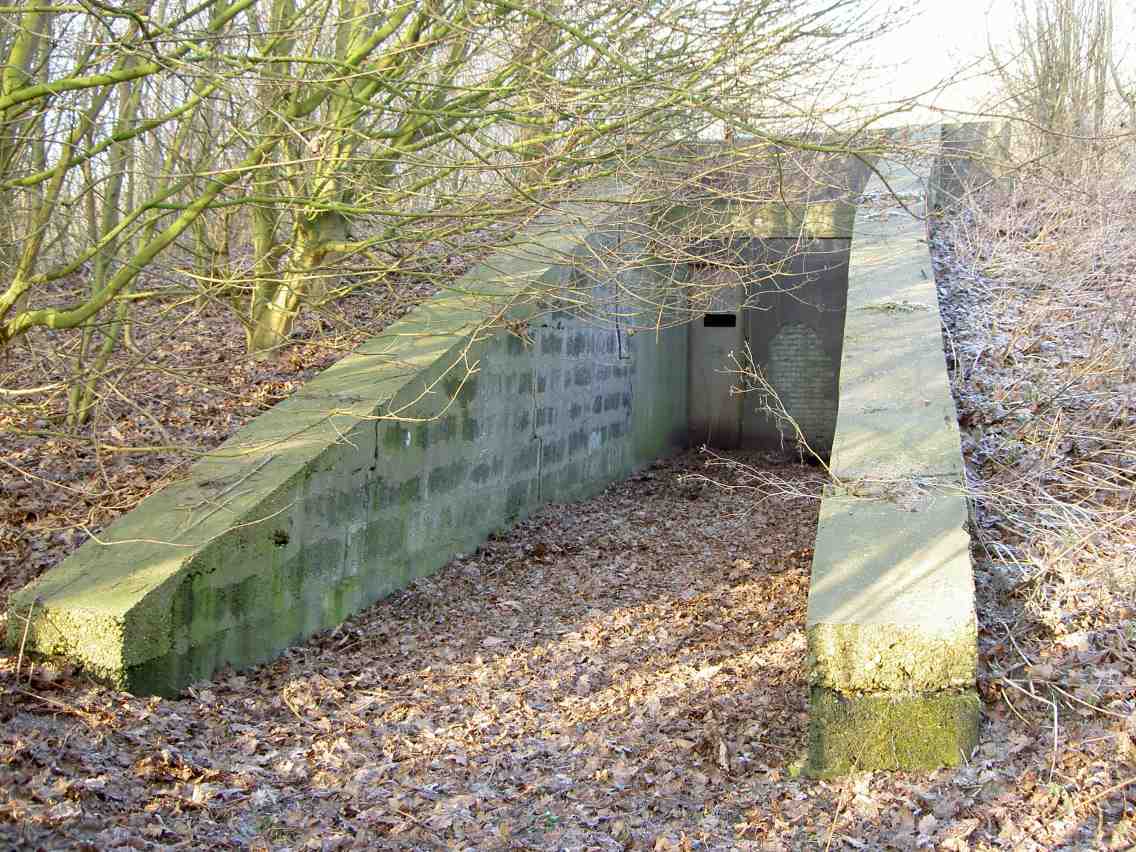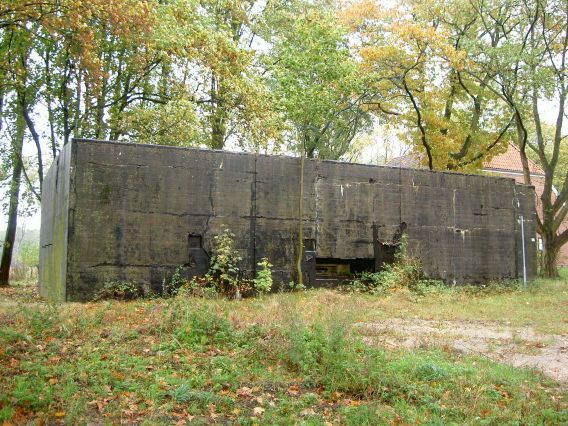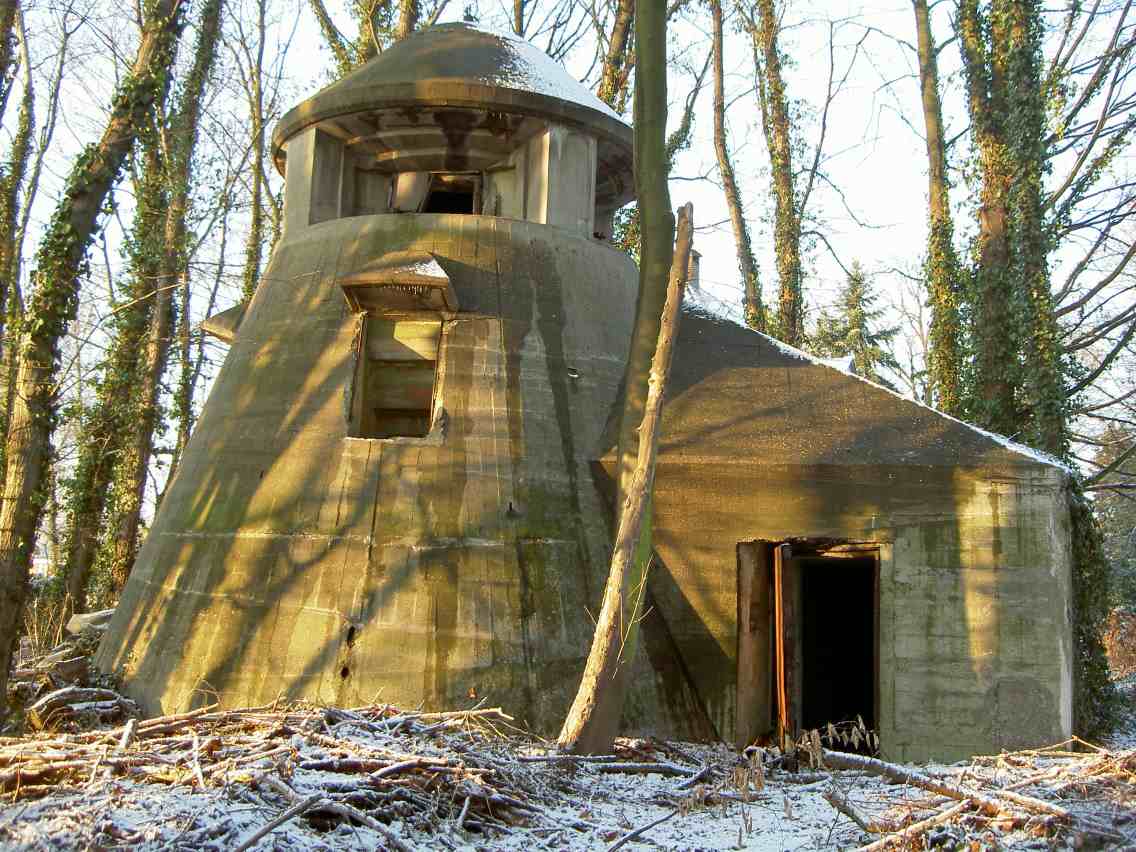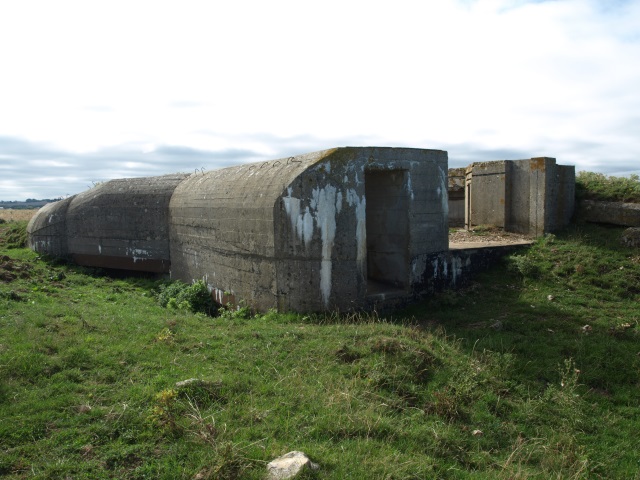Airfields
Let’s take a closer look on a so-called Fliegerhorst
When Germany occupied Europe, it gained an enormes network of airfields. The Luftwaffe immediately began to improve them, specifically by hardening the landing strips. On all air bases buildings were built for a number of special tasks. For example, workshops for maintenance, ammunition and fuel depots, camouflaged shelters and even large, village like camps to accommodate the crew were introduced.
Very often, they were not situated directly along the coast. As a result, they were not integrated in the coastal defence. But considering the importance, they too were heavily defended by AA batteries and infantry strongpoints. Therefore, aircraft hangars, supportive buildings and infrastructure, anti-aircraft batteries, infantry positions and radar stations became visible on the European landing fields.
First impression of Airfields
 Machinery bunker type Küver 455 of Flugplatz Katwijk
Machinery bunker type Küver 455 of Flugplatz Katwijk
Airfields
Air bases in Europe were improved immediately
When Germany occupied Europe, it gained an enormes network of airfields. The Luftwaffe immediately began to improve them, specifically by hardening the landing strips. On all air bases buildings were built for a number of special tasks. For example, workshops for maintenance, ammunition and fuel depots, camouflaged shelters and even large, village like camps to accommodate the crew were introduced.
Very often, they were not situated directly along the coast. As a result, they were not integrated in the coastal defence. But considering the importance, they too were heavily defended by AA batteries and infantry strongpoints. Therefore, aircraft hangars, supportive buildings and infrastructure, anti-aircraft batteries, infantry positions and radar stations became visible on the European landing fields.
There were differences in terms of function
The airfields were different in terms of function. The biggest air bases capable of housing a large number of bombers and fighter planes, making them specially suitable for the offensive (Fliegerhorst). Because of missing hard landing strips, the middle size bases were unsuitable for heavy bombers, and therefor only stationed fighter planes for defensive purposes (Flugplatz). The smallest fields did not have an offensive or defensive task.
During the Battle of Britain, the airfields in Holland, Belgium and France were mostly used by the Luftwaffe. For example, in Holland and Belgium mainly bombers were active in the air war with England. From airfields in northern France fighter planes flew their missions, because of the smallest distance with England.
Flugplatz
Fliegerhorst
Leithorst
After the battle
Despite all efforts, the Battle of Britain was lost and with this, the Luftwaffe also lost its air supremacy. In the following years, the improvements on the airfields came to a standstill, and available resources were used on other fronts. After the war, many former airfields played a role during the Cold War. At present day some are in use and some abandoned, but very interesting for the German traces that still can be found on and around these grounds.



